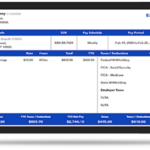When it comes to maintaining your vehicle, finding high-quality car body parts is crucial. For many, the quest for these parts can be daunting, especially when considering the vast world of used car parts. However, used auto parts stores offer a treasure trove of components that are not only affordable but also reliable. Let’s delve into the benefits of using used car parts, how to choose the right parts, and tips for navigating used auto parts stores.
How Buying Old Used Car Parts Different From Buying New Ones?
When it comes to maintaining and repairing a vehicle, choosing between new and used car parts can significantly impact your budget, the longevity of the repair, and the overall performance of your car.
Cost Savings
Used Car Parts: One of the most significant advantages of buying used car parts is cost savings. Used parts can be significantly cheaper than new ones, sometimes costing only a fraction of the price. This makes them an attractive option for budget-conscious car owners or those with older vehicles where the investment in new parts might not be justified.
New Car Parts: New car parts are typically more expensive because they are unused and come with a manufacturer’s warranty. The higher cost can be a worthwhile investment for newer or more valuable vehicles where maintaining the car’s condition is essential.
Availability and Variety
Used Car Parts: Used parts are often readily available, especially for older or discontinued models. Salvage yards and online marketplaces can be treasure troves for finding rare or hard-to-find parts that are no longer in production. This can be particularly advantageous for owners of classic cars or vehicles with discontinued models.
New Car Parts: New parts are generally not accessible for all car models, especially for classic ones. Auto parts stores and dealerships often keep a wide range of new parts in stock, making it easier to find what you need without much searching. However, for older or less common models, finding new parts can sometimes be challenging or expensive.
Environmental Impact
Used Car Parts: Using recycled car parts is an environmentally friendly choice. It reduces the demand for new parts production, which in turn lowers the associated environmental impact, such as energy consumption and raw material extraction. Recycling parts also helps reduce the volume of automotive waste that ends up in landfills.
New Car Parts: While new parts are essential for maintaining the safety and performance of newer vehicles, their production and distribution have a more significant environmental impact. The manufacturing process consumes raw materials and energy, contributing to pollution and resource depletion.
Customization and Restoration
Used Car Parts: For enthusiasts working on custom projects or restoring classic cars, used parts can be invaluable. They often provide the original components that match the vehicle’s period and style. This authenticity can be crucial for restoration or maintaining the car’s historical integrity.
New Car Parts: While new parts provide reliability, they may not always match the original look or feel of older vehicles. Customization options are available, but they might require more effort and cost to achieve the desired aesthetic or performance enhancements.
Decision Factors
When deciding between used and new car parts, consider the following factors:
1.Budget: How much are you willing to spend?
2.Vehicle Age and Value: Is the car new and valuable or older and less valuable?
3.Part Criticality: Is the part essential to the vehicle’s safety and performance?
4.Environmental Concerns: Are you prioritizing eco-friendly options?
5.Availability: How easily can you find the part you need?
6.Warranty Needs: How important is warranty coverage to you?
Tips for Choosing the Right Used Car Parts
Do Your Research
Before heading to used auto parts stores, it’s essential to do some homework. Know the exact part you need, including the make, model, and year of your vehicle. Having this information on hand can save you time and ensure you get the right part.
Inspect Thoroughly
When buying used car parts, it’s crucial to inspect them thoroughly. Look for any signs of damage or excessive wear. If possible, bring along a mechanic or someone knowledgeable about car parts to help you assess the condition.
Ask About Warranty
Many used auto parts stores offer warranties on their parts. While these warranties may not be as comprehensive as those for new parts, they can provide some peace of mind. Be sure to ask about the warranty policy and what it covers before making a purchase.
Verify Compatibility
Ensure that the used part you’re considering is compatible with your vehicle. Sometimes, even slight differences in part numbers can indicate incompatibility. Double-check with the seller and, if possible, test the part on your vehicle before finalizing the purchase.
Navigating Used Auto Parts Stores
Online vs. Physical Stores
Used auto parts can be sourced from both online platforms and physical stores. Each option has its pros and cons. Online stores offer the convenience of shopping from home and often have extensive inventories. However, physical stores allow you to inspect parts in person and avoid shipping fees.
Know the Jargon
Familiarize yourself with common terms and jargon used in the auto parts industry. Understanding these terms can help you communicate more effectively with sellers and make informed decisions.
Build Relationships
Developing a good relationship with local used auto parts stores can be beneficial. Regular customers may receive better deals, insider information about new arrivals, and personalized service.
Best Practices for Installing Used Car Parts
Professional Installation
While some car enthusiasts may prefer to install parts themselves, it’s often best to have used car parts installed by a professional mechanic. A mechanic can ensure the part is correctly fitted and functioning properly, which can prevent future issues.
Maintenance and Care
Once you’ve installed car body parts, regular maintenance is key to extending their lifespan. Follow the manufacturer’s maintenance recommendations and address any issues promptly to keep your vehicle running smoothly.
Keep Records
Maintain detailed records of all the used parts you purchase and install, including receipts, warranty information, and installation dates. This documentation can be invaluable if you need to reference it for future repairs or resale.
Success Stories: The Value of Used Car Parts
Case Study: Restoring a Classic Car
One car enthusiast, John, shared his success story of restoring a classic 1965 Mustang using used car parts. He found rare components at various used auto parts stores, saving thousands of dollars compared to new parts. John’s Mustang is now a showpiece, demonstrating the potential of used parts in vehicle restoration.
Everyday Savings for Regular Drivers
Jane, a commuter, turned to used car parts when her vehicle needed a new transmission. By sourcing a used transmission from a reputable auto parts store, she saved over 50% compared to a new one. Jane’s car has been running smoothly for years, proving that used parts can be a reliable and cost-effective solution.
Conclusion
In conclusion, used car body parts offer numerous benefits, from cost savings to environmental impact. By doing thorough research, inspecting parts carefully, and building relationships with used auto parts stores, you can navigate this world with confidence. Whether you’re restoring a classic car or maintaining your daily driver, used car parts can provide a reliable, affordable solution for your automotive needs. So next time your vehicle needs a component, consider the world of used car parts, your wallet, and the planet will thank you.












